Excellence in Publishing with the Cotsen Institute Press
Whether it is a book based on your PhD dissertation, a compilation of essays on a theme, or a two-volume tome covering a decade of excavations, you want the publication of your work to reflect respect for your efforts and to be something in which you take pride. Working with the right publisher can make all the difference in achieving these goals, and academic authors continue to find that the Cotsen Institute of Archaeology Press is the place to go for excellence in publishing.
Upon contacting some of the authors of these publications from the Cotsen Institute Press, it became clear that major factors influencing their choice of publisher were the appeal of working with the Press and the quality of the final result. Leading the Cotsen Institute Press is publications director Randi Danforth. The list of books to be published is determined by an editorial board, composed of core faculty members of the Cotsen Institute. For the past six years, the board has been helmed by editor-in-chief Aaron Burke, professor in the Department of Near Eastern Languages and Cultures.
“A Long and Brilliant History”
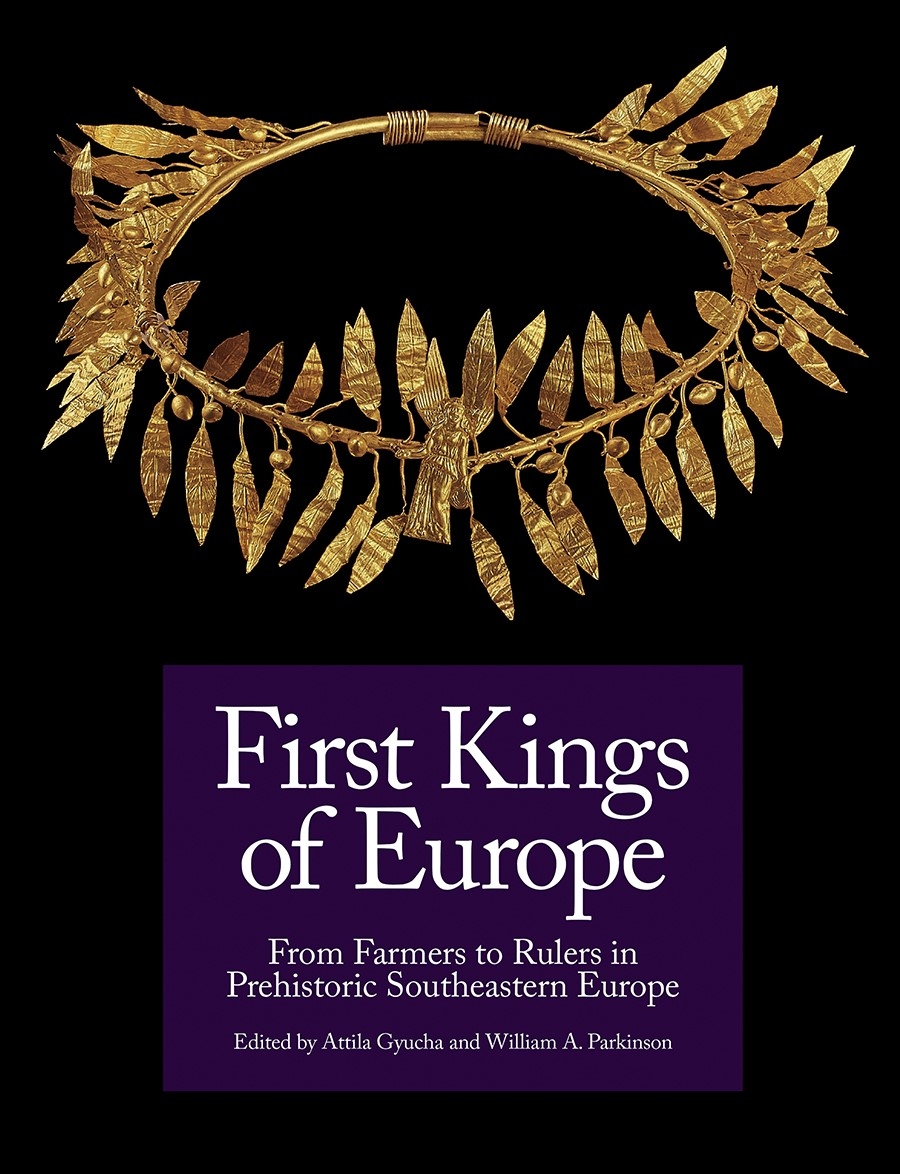 William A. Parkinson and Attila Gyucha are co-editors, along with Richard W. Yerkes, of Bikeri: Two Copper Age Villages on the Great Hungarian Plain, published in November 2021. The two are also co-editors of the forthcoming First Kings of Europe: From Farmers to Rulers in Prehistoric Southeastern Europe to be co-published with the Field Museum in Chicago along with a catalog for the accompanying exhibit to be launched at the Field Museum next year. Parkinson is curator and professor of anthropology at the Field Museum of Natural History and the University of Illinois at Chicago. He has previously published with the Cotsen Institute Press. Gyucha is assistant professor of anthropology at the University of Georgia.
William A. Parkinson and Attila Gyucha are co-editors, along with Richard W. Yerkes, of Bikeri: Two Copper Age Villages on the Great Hungarian Plain, published in November 2021. The two are also co-editors of the forthcoming First Kings of Europe: From Farmers to Rulers in Prehistoric Southeastern Europe to be co-published with the Field Museum in Chicago along with a catalog for the accompanying exhibit to be launched at the Field Museum next year. Parkinson is curator and professor of anthropology at the Field Museum of Natural History and the University of Illinois at Chicago. He has previously published with the Cotsen Institute Press. Gyucha is assistant professor of anthropology at the University of Georgia.
“We decided to go with the Cotsen Institute Press very early on,” during their Bikeri project because “it has a long and brilliant history with the publication of major archaeological projects,” according to Gyucha. “It was a very logical choice because of the format, the monograph, the history of the Cotsen Institute Press and the clarity evident in their publications,” he continued.
Meeting the Challenge of Data Publication
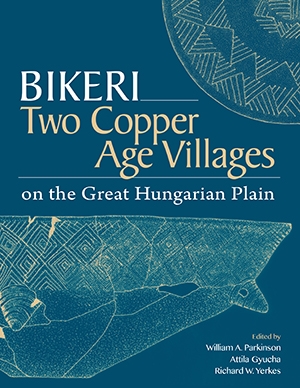
With Bikeri, “the real issue is that most university presses do not want to publish raw data,” Parkinson explained. “They will publish edited volumes or a monograph, or might focus on what comes out of their own university. Other publishers might require camera-ready copy or do not have peer reviewers, he added. “When it comes to publishing the meat and potatoes of archaeology: the photographs, the illustrations, the data tables that include all the material that you have found, there really is no other place than the Cotsen Institute Press to do this kind of publishing,” he said.
“Basic information is the very foundation of archaeology. What people are going to be reading in a hundred years are those site reports,” he added. “You also need to remember that we are archaeologists and do not have money to publish. With the endowment from Lloyd Cotsen, they are very good at working with us on the subvention for what it costs. I always want to make sure that the members of the editorial board understand how important this press is for the Cotsen Institute. For the institute, the press is huge,” Parkinson noted.
Gyucha described their work as a long, painful process of data collection and data interpretation. “Because science is forever, there is no clear end to the process. In the case of Bikeri, we are not excavating at those sites anymore. We will continue to use the archaeological information that we generated from our excavations and learn more about it over the next two or three decades. But we had enough at this point to say that we are going to publish what we have,” Parkinson said.
“Almost a Unicorn”
These sentiments strongly reflect the focus of the Press as seen by Burke, who has been on the editorial board for nearly a decade. He has also seen the experience “from the side of being on the editorial board to being a submitter,” having had two of his own volumes published through the Cotsen Institute Press. “When people talk about the value of archaeological publications, the Cotsen Institute Press is almost a unicorn,” Burke added.
He describes archaeological reports as heavy lifts involving tons of organizing and insufficient recognition for the work required to do the research, fund it, and then do the extensive, expensive, and time-consuming work to put it all together. According to Burke, the Cotsen Institute Press provides, “the support apparatus for online digital data, choices about how to present certain types of data, and the kinds of copy-editing that is specific to archaeology,” he explained. “The difficult part of archaeology at this point is not funding an excavation with dozens of people in the field. It is funding the book that comes out with the primary data and the profound analysis of where that data fits in. We are more than a hundred years into most fields in archaeology, and we have a lot of material against which to place new results. That is a patient and long endeavor. But, in the end, it also has the longest shelf life,” he added.
Archaeological Research Cannot be Duplicated
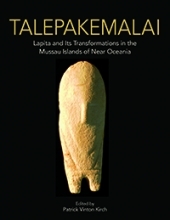 Burke also emphasized that, “in archaeology, you cannot really duplicate anything we do.” This was also stressed by Patrick Kirch, whose most recent publication with the Cotsen Institute Press is Talepakemalai: Lapita and Its Transformations in the Mussau Islands of Near Oceania, published in November, 2021. Kirch is professor of anthropology at the University of Hawai’i, Manoa. This is the second book he has published with the Cotsen Institute Press.
Burke also emphasized that, “in archaeology, you cannot really duplicate anything we do.” This was also stressed by Patrick Kirch, whose most recent publication with the Cotsen Institute Press is Talepakemalai: Lapita and Its Transformations in the Mussau Islands of Near Oceania, published in November, 2021. Kirch is professor of anthropology at the University of Hawai’i, Manoa. This is the second book he has published with the Cotsen Institute Press.
According to Kirch, “excavation destroys the basic context of a site and its contents, so a complete accounting of the excavation is essential for future generations of scholars to fully interpret what has been found. This is where the Cotsen Institute Press comes in, especially with its Monumenta Archaeologica series, which is carefully edited and beautifully produced. This is one of the few series of monographs that still publishes the full details of major excavations. A second reason is that the Press has good distribution and marketing. And a third reason is the digital archives that the Press has developed to link supplementary online data to the monograph.”
The Importance of Series Publishing
In addition to the Monumenta Archaeologica series, the Cotsen Institute Press publishes titles in six other series. Each series has its own purpose, and the list can present an excellent guideline when choosing a publisher. Burke noted that one of the reasons series are important is that “libraries become the repositories and often have standing orders for series.”
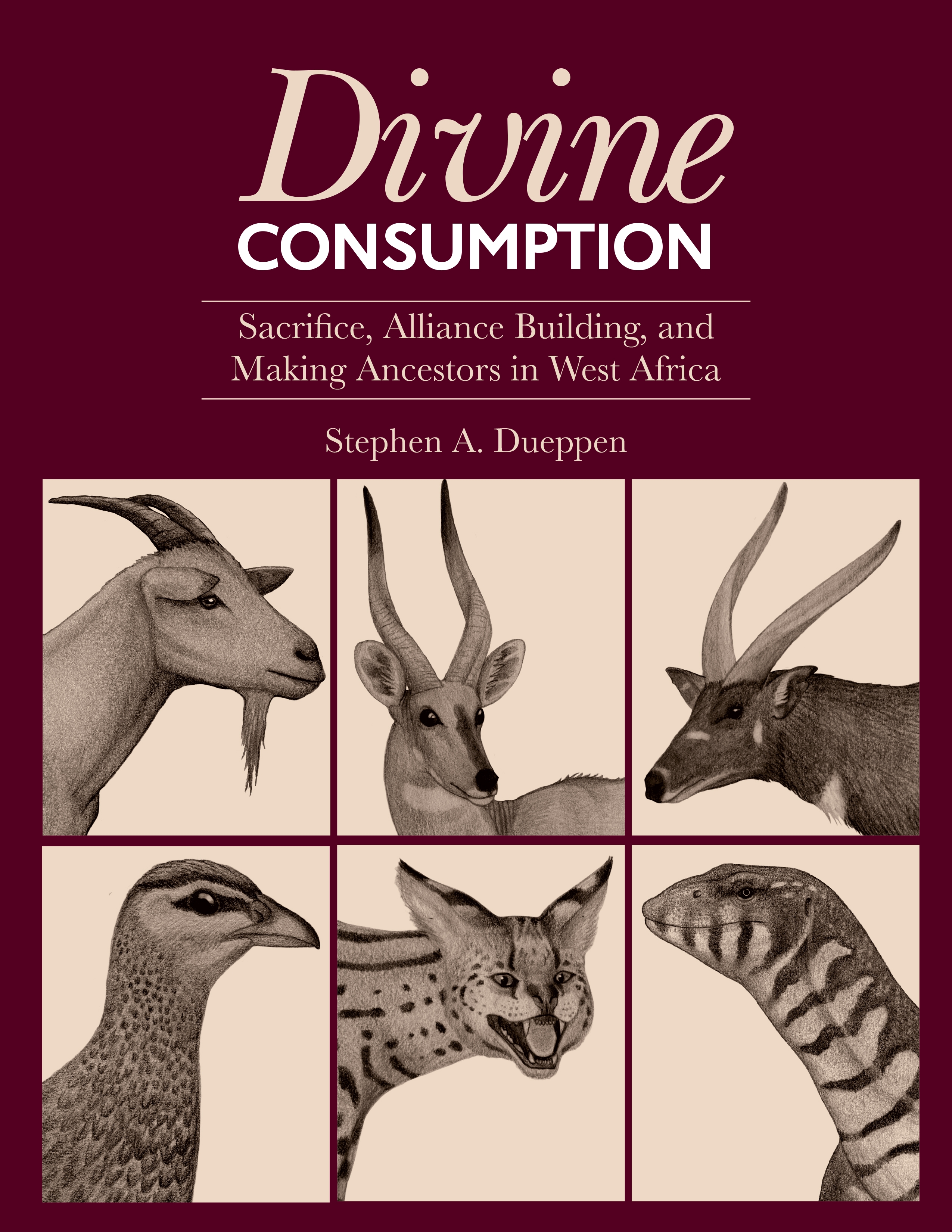 Looking at previous books in the series of the Cotsen Institute Press in is a good way for aspiring authors to help them prepare their manuscript by envisioning it within a series, suggested Stephen Dueppen, author of the upcoming book Divine Consumption: Sacrifice, Alliance Building, and Making Ancestors in West Africa. Dueppen is associate professor of anthropology at the University of Oregon. “People who are looking for information on the topic that you are working on are more likely to find your publication if the publisher already has books on the subject,” added Hans Barnard, whose upcoming book is Archaeology Outside the Box.
Looking at previous books in the series of the Cotsen Institute Press in is a good way for aspiring authors to help them prepare their manuscript by envisioning it within a series, suggested Stephen Dueppen, author of the upcoming book Divine Consumption: Sacrifice, Alliance Building, and Making Ancestors in West Africa. Dueppen is associate professor of anthropology at the University of Oregon. “People who are looking for information on the topic that you are working on are more likely to find your publication if the publisher already has books on the subject,” added Hans Barnard, whose upcoming book is Archaeology Outside the Box.
Dueppen notes that, “I was looking for a publisher of a respected global archaeology series with high production quality books. I was really interested in a series that would publish a book on a large-scale archaeological project, including both data and theory. Archaeological arguments are most effective when it is possible to include a detailed presentation of the data and analyses. The Cotsen Institute Press supports this, which has resulted in many exceptional books. My experiences working with the Press have been really great. From my first inquiry, they were interested and excited about my book on West African archaeology. I am very happy with my forthcoming book, which has benefitted greatly from the fantastic editorial and production team at the Cotsen Institute Press,” he added.
When looking for a publisher for The Archaeology of Political Organization: Urbanism in Classic Period Veracruz, Mexico, Barbara Stark explained that she had specific reasons for considering the Cotsen Institute Press. “First, I asked someone I trusted who recently had published there. The Cotsen Institute Press was praised as thorough, efficient, and with high standards of production." When she examined monographs in her field that the Press had published, she concurred, and thought the volumes were handsome.
“Comparisons and analysis in archaeology depend on having access not just to ideas and interpretations, but also to basic data that permits independent lines of inquiry. My monograph had settlement data accumulated from decades of field seasons and subsequent analyses. I wanted it to have a welcome home,” she continued.
Production Standards are Critical
Another factor for Stark, who is professor emerita at the School of Human Evolution and Social Change at Arizona State University, Tempe, was the suitable page size that was available with the Cotsen Institute Press. She pointed out that commercial publishers face economic challenges that often result in the page size being relatively small: too small to accommodate the maps and other illustrations that archaeologists have.
During the publishing process, she was extremely impressed with the publishing staff. “After some fifty years of experience in academic publishing, I have gained great respect for high-quality copy-editing and production standards. Through the review process and production steps, I found the interactions to be extremely positive. The staff were patient with my concerns about how certain maps were published, and they pushed me to improve the graphic quality of illustrations,” she continued.
“I pride myself on producing a relatively clean manuscript text, but real copy-editing skills always make for improvements. These days a commitment to technical excellence in publishing is taking a beating, and my experiences with the Cotsen Institute Press stand out against that backdrop. I am grateful for the assistance in making my monograph better; so much so that I spontaneously made an anonymous donation to the Press in recognition of the copy-editing and production staff. I saw talent and commitment and wanted to encourage and appreciate them. So I am a big fan.”
Press Director Takes Hands-On Approach
Being hands-on in the production process is the job of Randi Danforth. “We pay enormous attention to detail and try to be as accurate as possible,” she noted. She added that the Cotsen Institute Press goes for high quality and is pretty good with schedules. But, she emphasized, “our manuscripts come in with an extremely high level of quality already.”
Danforth works with various freelance copy editors and designers, based on the requirements for each publication. The technical editing for archaeology is a very particular skill, she pointed out. She explained that she has a few editors who are really good at the data, not just paying attention to the text. They also are familiar with scholarly publishing. Other than the assistance of one work-study student, Danforth is the sole staff member of the press. However, she pointed out that Deidre Brin, director of the Digital Archaeology Laboratory and Data Publication, devotes a percentage of her time to the digital side of publishing, which is an increasingly important endeavor.
Working with Danforth is described by John Papadopoulos as a “great privilege." Papadopoulos and his co-author Sarah Morris are both professors of classics at UCLA and have published several times with the Cotsen Institute Press. Their upcoming volume is on the excavations at Methone (Greece).
He added to the conversation about the lack of publishers for primary data. He explained that although another publisher had the first right to his upcoming book on excavations at Methone, “they could not guarantee color or might provide only a few color pages,” he said. They also told him that because it is a large volume that they would have to publish one volume one year, and have the second volume come out the following year. Neither of these conditions was acceptable to him, and when he asked if he could take the book elsewhere, they agreed because they were unable to do what he wanted. He added that “the publication of primary data takes a long time and the Cotsen Institute Press is actually quite good about that.” For him, the result was a volume with 29 chapters, an extensive introduction, and approximately 35 contributors. “Quite an undertaking,” according to Papadopoulos.
As a long-time member of the editorial board, he added that “we have also specialized in more general form. One of the really heartening things was the book by UCLA professor Lothar von Falkenhausen on Chinese Society in the Age of Confucius. He really wanted it published through the Cotsen Institute. This was a book that literally could have been published anywhere. I know many presses that would have wanted it because it is of general interest. Eventually it won the Society for American Archaeology Best Book Award.” He also noted Jeanne Arnold’s book on Life at Home in the Twenty-First Century: 32 Families Open Their Doors, which won the John Collier Jr. Award for Still Photography. “That was also a great success,” he pointed out.
“So we have gotten a reputation for both cutting-edge individual topics in terms of advanced seminars, publication of primary data, and we are publishing things that any publisher would dearly like to get their hands on.” As a result, “we are now getting a lot of people submitting things to us because we have covered the full gamut. People have started to take notice of our publications and are seeing that we are one of the premier venues now.” Burke added that authors, “see the citations of publications that we are putting out; visibility as a result of good quality.”
Edited Volumes: Another Strong Area
Edited volumes is another area where the Cotsen Institute Press excels. “Many publishers do not like to publish edited volumes,” according to Barnard, associate adjunct professor in the Department of Near Eastern Languages and Cultures at UCLA. He is also editor of Backdirt, the journal of the Cotsen Institute of Archaeology, which is published annually by the Cotsen Institute Press.
This is mostly because the market for edited volumes is limited to a scholarly audience, Barnard explained, although his new book will be aimed at a general audience, according to Danforth. As editor of the upcoming book, he is aware of drawbacks of this format that might discourage publishers, including the need for cohesion between chapters and the variable quality of the contributions. “The Cotsen Institute Press is one of the few publishers that does not shy away,” from the work required to create the best product, he explained, adding that it is the job of the editor of the volume to bring the chapters together as best as possible.
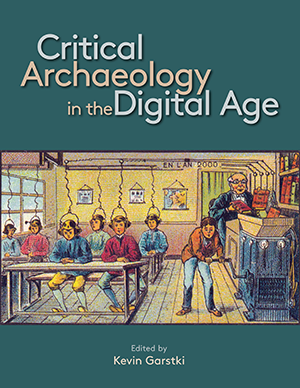 “Usually these types of books are the result of a conference, but there are often authors who have not been at the conference, and there are others at the conference who never write up their presentation,” he added. “For many people, knowing that there is going to be a book based on the conference is an incentive for them to go to the conference. Many are reluctant to go if the proceedings are not to be published, whether it is in an article or as a book,” he continued. Burke noted that potential authors may even submit proposals with ideas for conferences whose proceedings they think would be ideally published through the Cotsen Institute Press.
“Usually these types of books are the result of a conference, but there are often authors who have not been at the conference, and there are others at the conference who never write up their presentation,” he added. “For many people, knowing that there is going to be a book based on the conference is an incentive for them to go to the conference. Many are reluctant to go if the proceedings are not to be published, whether it is in an article or as a book,” he continued. Burke noted that potential authors may even submit proposals with ideas for conferences whose proceedings they think would be ideally published through the Cotsen Institute Press.
The approach to edited volumes was further explained by Kevin Garstki whose book is on Critical Archaeology in the Digital Age: Proceedings of the 12th IEMA Visiting Scholar’s Conference. He explained that this publication is a fair amount different than what was actually presented in the conference. There are chapters that “even though they were not presented were pertinent to what was discussed and should be added, while the chapters themselves are kind of expansions on ideas that were brought up during presentations,” he noted. Garstki is a lecturer in the Department of Anthropology, Global Religions, and Cultures at the University of Wisconsin, Oshkosh. This is his first edited volume.
Offering Resources for Digital Publishing
As appropriate to the theme of the digital age, the book will basically be a free, open-access eBook, with print on demand, discussing how digital technology can serve archaeology. Garstki was the person responsible for the conference and was aware that historically conferences are published in an edited volume. “As the conference was going on, and we were having great discussions around different types of ethics in archaeology, especially when it comes to digital technologies in archaeology, many of us thought it would be a bit ironic to have all these wonderful papers and ideas surrounding open access, open data, and open science and not publish them digitally,” he explained. When he spoke with the intended publisher of the conference publication, he found that they just did not have the resources to do it.
“So I was able to look around the publishing landscape and see what other possibilities there were to put forth this publication in an open access format. I had the privilege of meeting Willeke Wendrich, director of the Cotsen Institute, at the same conference the previous year, and she mentioned the Cotsen Institute Press as a possibility for publishing the book on the conference. She put me in touch with Randi Danforth and Aaron Burke, and it just went from there,” he continued. Wendrich is, “extremely involved and supportive of the Cotsen Institute Press and considers the publishing unit an essential part of the mission of the Cotsen Institute and of the dissemination of scholarship,” according to Danforth.
Garstki emphasized that he was, “so impressed with their willingness to support me and the other authors,” in light of the fact that his experience had shown that publishers were most interested in their own people and the work they do. In the introduction to his book, he thanks the Press and points out that as an early career scholar, he has limited institutional and resource support. He explained that it is at times difficult to do research and publish in ways that reflect his own ethics. “The Cotsen Institute Press provided a means to do just that, and I am grateful to them.”
The Importance of Digital Publishing
In discussions during the conference on the value and increasing use of digital publishing, he found there were some individuals who suggested that a digital publication does not look good to hiring committees because “that is not how we have been doing things.” He pointed out that there are now guidelines within some of the major professional organizations in the United States that specifically lay out how digital projects, not just publications, but tangible projects like websites or larger digital humanities projects should be viewed and scored in the right kind of processes.
He noted that many digital publications currently available are being used and getting cited. “When you are doing a lot of literature review and searching and trying to identify resources, if you are able to find something immediately and download it, you will read it right there,” he said. “If I have to put in an order through my library for a journal or book that we do not have access to, or that the library does not have access to, and I need to put it on interlibrary loan,” that puts everything on hold, he explained.
Danforth also stresses the importance of digital publishing. In certain fields, she notes, “people really do not want to publish books in print.” She explains that with digital publishing, “there is more portability and wider distribution opportunities.” With print volumes, “it is harder to get things around the world; it is difficult and expensive to distribute books. If you are in the Andes or in India, or in South America, or in the South Pacific, the subject area of our recent book by Pat Kirch, it might be hard and expensive to get access to the printed book,” she explained. Although the Cotsen Institute is still publishing a print version of everything, “some people will say that younger scholars really do not want them, and that we have to provide more flexibility. I totally agree with that.”
Danforth explained that, “most of the newer books published by the Press are available in Kindle editions on Amazon, and most of our list is available on the University of California website eScholarship for free; either read-only or download as a PDF for older books. An increasing number of books have an exceptional feature in that additional data from the research is available on our data platform Digital Information Gateway (DIG), which is indicated by a special icon on the catalog page.” She added that the ISD, the distributor of the Cotsen Institute Press, also produces library-specific PDFs.
Digital printing has also greatly improved, with costs coming down, Danforth added, with affordable color quality being the main benefit. “When I came in, there were a lot of very costly expenses that I think were unnecessary. Basically, I have been able to tighten up our production costs without sacrificing quality; and with a judicious choice of freelancers and printers, we have a pretty efficient operation.”
Finding New Authors
The process for authors investigating publication with the Cotsen Institute Press is readily available from the website of the press. However, members of the editorial board often instigate contact with potential authors in their respective fields whom they know or have met at conferences. “We are out there pitching our press, and we even have people who have left UCLA and go elsewhere who can speak of the Cotsen Institute Press,” according to Burke. The board membership talks to and solicits from its specialists and networks of scholars, he added. “The tentacles of our faculty reach far and wide,” according to Danforth, because the Press has had submissions from authors who were motivated by someone currently at UCLA whom they had known from previous universities.
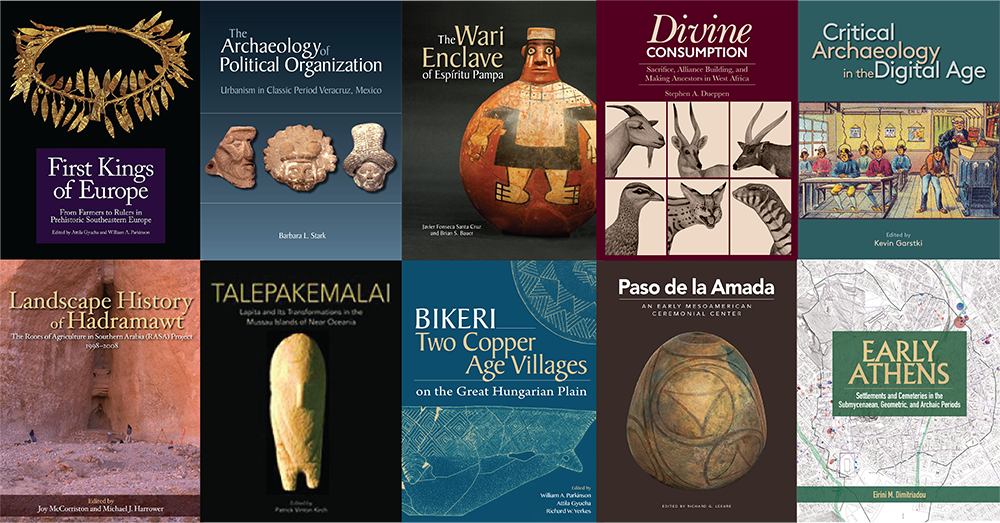
One of the best examples of outreach to potential authors comes from Papadopoulos, who was on a doctoral dissertation committee in Greece. He thought the submission was “fabulous” and approached the author explaining what she needed to do to change it into a book, including translating it into English, telling her that it was something in which the Cotsen Institute Press would definitely be interested. “She did it and was actually very happy to do so,” he explained. “It was her first book, and it has been very well received,” he added.
The editorial board is made up of between seven and eight tenured faculty affiliated with the Cotsen Institute. They agree to serve as representatives for their areas of expertise, so that they can advise on the choice of peer reviewers for submitted manuscripts, as well as reach out to potential authors to encourage their submissions. Each proposed manuscript is anonymously peer-reviewed by an internal and an external reviewer, according to Danforth.
She points out that when Burke goes on sabbatical in the spring of 2022, she and the other board members will miss his extraordinary involvement. “He has just been brilliant because he is very detail-oriented,” she said. “He actually created the position of editor-in-chief and is very involved with the specifics of the publications, such as giving the authors feedback from the board and the reviewers.”
Providing Financial Support
Resources are another main concern of Burke. He explains that the actual cost to create the quality of production for which the Cotsen Institute Press has become known is substantive. “We all feel a little awkward when we communicate with authors about subventions,” he said. A subvention is funding provided to the publisher to facilitate the publication of a book.
“I feel a lot less uncomfortable when I can tell them that this is a fraction of the cost. By providing that fractional cost and chipping in on the effort, you are keeping those wheels going for your younger colleagues; you are keeping them going maybe for your own second volume,” he added. “We have had many authors submit additional volumes to us because they were pleased with their experience the first time around,” he explained. Parkinson also mentioned that the Press is, “very good in working with us on the subvention.” For Garstki, the surprise was that the Cotsen Institute was willing to support him and other authors outside the Institute. Danforth mentioned that only about half of the authors published by the Cotsen Institute Press are from UCLA, and that submissions are received from all over the country.
“We will never turn down a book that does not have funding,” Danforth added. “We ask if they have subvention funds, and they often do. We do have a publications fund at the Cotsen Institute,” Danforth noted. “We also have the Joanne Stolaroff Award, which is bestowed by the editorial board,” she explained. “Thanks to the generosity of Mr. Lloyd E. Cotsen and other donors, our volumes are subsidized so that they can be made available at an affordable price to people around the globe while maintaining a superb level of quality.”
Award Winning Books
One of the measures of the success of the Cotsen Institute Press is the number of awards won by books that the Cotsen Institute has published. In addition to those mentioned earlier, the recently-published Landscape History of Hadramawt won the AIA McCann Award for Fieldwork Reports.
Other award winning books include:
• The ASOR 2017 winner of the G. Ernest Wright Award: Rural Archaeology in Early Urban Northern Mesopotamia: Excavations at Tell al-Raq’i. An earlier winner of the same award was The History and Archaeology of Jaffa: Volume 1.
• Winner of the 2014 SAA Book Award in the Scholarly Category: Light and Shadow: Isolation and Interaction in the Shala Valley of Northern Albania. An earlier winner of the same award was Chinese Society in the Age of Confucius.
• Winner of the Choice 2013 Award for Outstanding Academic Title: Crucible of Pueblos: The Early Pueblo Period in the Northern Southwest.
The Cotsen Institute hosts the Author Spotlight series, a quarterly hybrid event (both online and in-person) that features the author of one of our recently published books. The first lecture was delivered on March 1, 2022 by Richard Lesure, the second will be by Stephen Dueppen on May 24, 2022.
Continued donor support is critically important to fulfill our mission of disseminating archaeological research, and there are a number of ways prospective donors can help ensure the preservation of cultural heritage through publication.
Philanthropic contributions of any size are welcome. To sponsor a book, gifts of $5,000 or more may be designated to subsidize the special costs associated with publication and will be recognized in the first pages of the book. Donors can also choose to underwrite a series of publications in a particular subject with a gift of $25,000 or more. More information to sponsor a book or make a gift is available at the website of the Cotsen Institute.
For additional information, or to find out how to support our research and education in archaeology and conservation, please contact Michelle Jacobson at mjacobson@ioa.ucla.edu
Published on March 11, 2022.


